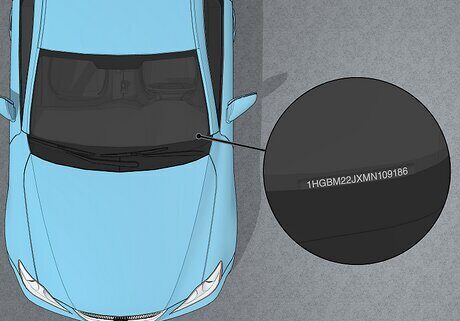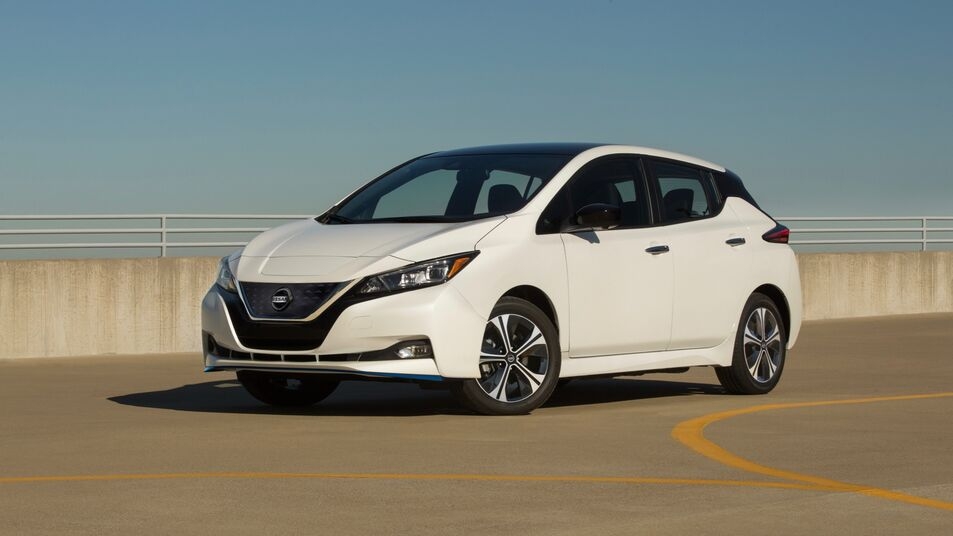Ever wondered how to find your car’s VIN? It’s not just a random set of numbers—it’s your vehicle’s unique identity! Picture this: you’re at the DMV, and they ask for your Vehicle Identification Number (VIN), but you’re stumped. Don’t worry, we’ve all been there! The VIN is a 17-character code unique to every car, like a fingerprint, holding details about the vehicle manufacturer, model, engine type, and more. In this guide, we’ll show you exactly where the VIN number is located on a car, why it’s a big deal, and even how to decode it for some cool insights. Ready to become a VIN-finding pro? Let’s get started!
What is a VIN and Why is it Important?
So, what’s a VIN anyway? It’s short for Vehicle Identification Number—a 17-digit code that’s like your car’s DNA. Every vehicle, from a Buick Enclave to an electric vehicle, has one, and no two are the same. It’s made up of letters and numbers that tell you the country of origin, vehicle type, engine size (like a 2.5-liter engine or a 454 Big-Block Engine), and more. But why should you care about this alphanumeric security code?
Here’s the scoop:
- Insurance and Registration: Your insurance company and the Department of Motor Vehicles need the VIN for your insurance policy, registration card, or vehicle title. Without it, you’re stuck!
- Buying or Selling: Want to check a car’s vehicle history before buying? The VIN lets you dig into title records, accident reports, or theft history via a VIN check—super handy for certified pre-owned vehicles.
- Recalls and Safety: The VIN helps you find out if your car has recalls. The National Highway Traffic Safety Administration (NHTSA) says over 50 million vehicles had recalls in 2022 alone (source: NHTSA.gov)!
- Repairs and Parts: At the repair shop, they’ll ask for the VIN to match parts to your vehicle specifications, like rim sizes or body type.
Pretty neat, huh? It’s an essential piece of info for current car owners and anyone in the insurance industry.
Common Locations of the VIN on a Car
Alright, let’s tackle the big question: Where is the VIN number located on a car? It’s not always in one spot—it depends on the vehicle manufacturer, model, and year. Here are the most common locations to check:
- Dashboard: Peek through the windshield on the driver-side dashboard. You’ll see a VIN plate—a small metal tag with the number. This is the go-to spot for most cars.
- Driver-Side Door Jamb: Open the driver-side door and look at the driver-side doorjamb. There’s often a sticker or VIN label there, sometimes called the driver-side doorframe label.
- Engine Block: Lift the hood and check the engine compartment. The VIN might be stamped on the engine block or an engine plate near the front—perfect for mechanics!
- Frame of the Car: Look near the windshield wipers or under the hood on the frame. Some cars hide it on the driver-side rear framerail or driver-side trunk driprail molding.
- Other Spots:
- Under the spare tire in the trunk.
- On the firewall (the wall between the engine bay and cabin).
- Inside the wheel well or on the chassis near the rear wheel.
Quick Tip: Locations vary by make and model. A Toyota might have it on the firewall, while a Ford could stamp it on the steering wheel column. Keep reading for brand-specific clues!
Step-by-Step Guide to Finding the VIN
Let’s make this fun—think of it as a VIN treasure hunt! Here’s a checklist to find yours:
- Start at the Dashboard: Stand outside and look through the windshield at the driver-side dashboard. Spot that VIN plate? You’re golden!
- Check the Door Jamb: Open the driver-side door and inspect the driver-side doorpost or jamb. See a sticker? That’s it!
- Pop the Hood: Look at the engine block in the engine bay. It’s usually stamped near the front—grab a flashlight if it’s dark.
- Scan the Frame: Check the frame near the windshield wipers or under the hood. It might be on the driver-side inner fender apron.
- Dig Deeper: Peek under the spare tire in the trunk, on the firewall, or even the entire steering wheel mechanism.
Pro Tip: If the VIN’s dirty or faded, use a flashlight or gently wipe it with a cloth. Don’t scratch it! Still can’t find it? Check your insurance cards or title documents—they’ve got it listed.
How to Decode the VIN
So, what’s the deal with that 17-character code stamped on your car? It’s packed with info about your ride! Here’s how it works:
- Characters 1-3: World Manufacturer Identifier
This tells you the country of origin and vehicle manufacturer. For example, a “1” means it’s made in the U.S., while “J” points to Japan. So, if you’ve got a Buick Encore from Romain Buick GMC, those first digits spill the beans on where it came from. - Characters 4-8: Vehicle Attributes
These reveal the vehicle type, body type (like sedan or SUV), engine size (say, a 2.5-liter engine or a beefy 454 Big-Block Engine), and more. It’s like a cheat sheet for your car’s specs! - Character 9: Check Digit
This alphanumeric security code is like a bouncer at the club—it verifies the VIN isn’t fake. Pretty cool, right? - Characters 10-17: Vehicle Identifier
The 10th character gives you the model year (like “N” for 2023), the 11th character shows the assembly plant, and the 12th-17th characters are your car’s unique serial number. It’s the DNA that sets your ride apart from the millions out there.
Want to crack the code yourself? Grab a handy VIN decoder online—just punch in your VIN, and boom, you’ll get the full scoop! Sites like the National Highway Traffic Safety Administration (NHTSA) offer free tools to do a VIN check. Or, if you’re old-school, you can use charts from the vehicle manufacturer to decode it step-by-step. Did you know over 280 million active vehicles are registered in the U.S. alone (Statista, 2023)? Your VIN is what keeps yours unique!
Tips for When You Can’t Find the VIN
Okay, but what if your VIN’s playing hard to get? No worries—here’s how to track it down:
- Check Your Paperwork
Dig out your registration card, insurance documents, or vehicle title. The VIN’s always chilling there, ready to save the day. Your insurance cards from companies like Geico or Progressive will have it too. - Call in the Pros
Can’t find it? Contact the vehicle manufacturer or your dealership—like Romain Buick GMC if you’re rocking a Buick Enclave. They’ve got the hookup to verify it for you. - Hunt in Sneaky Spots
Some cars hide their VIN plate in weird places. Check under the carpet, on the driver-side inner fender apron, or even the radiator support bracket. I once found mine on the driver-side rear framerail after 20 minutes of searching—talk about a workout!
Heads-Up: If the VIN looks scratched off, alert the Department of Motor Vehicles or law enforcement agencies. VIN fraud’s a big deal—FBI stats say it costs $1 billion yearly (FBI.gov, 2023). Better safe than sorry!
Special Cases: Older Cars and Different VIN Formats
Got a classic vehicle that’s older than your parents’ mixtapes? Pre-1981 cars are a little different. Here’s the scoop:
- Pre-1981 Vehicles
Before the Federal Motor Vehicle Safety Standards kicked in during 1981, VINs weren’t always that 17-digit code we know today. They could be 10-13 characters long, and the format depended on the vehicle manufacturer. So, don’t freak out if it’s shorter! - Location Variations
For these oldies, check the engine block, transmission, or even inside the glove compartment. Other spots? Try the driver-side doorpost, steering wheel column, or under the hood in the engine bay. It’s like a treasure hunt! - Need a Hand?
Flip through your vehicle’s manual or call a vintage car specialist. They’re pros at sniffing out VIN locations on these beauties.
Fun Fact: The 17-character code became standard in 1981 to help everyone—insurance companies, repair shops, even you—track vehicle history easier. Before that? Total wild west!
Visual Aids: Where to Find the VIN
Seeing is believing, right? Here’s where to spot that VIN label with some visuals in mind:
- Dashboard VIN
Peek through the windshield at the driver-side dashboard. There’s a little VIN plate waiting for you—no tools needed! - Door Jamb VIN
Open the driver-side door and check the driver-side doorjamb or driver-side doorframe label. It’s usually a sticker screaming, “Here I am!” - Engine Block VIN
Pop the hood and scan the engine compartment. The VIN might be stamped on the engine plate or engine block—perfect for gearheads. - Frame VIN
Look at the frame near the windshield wipers or the driver-side trunk driprail molding. A diagram highlighting this spot would be gold!
VIN Locations by Popular Car Brands
So, where is the VIN number located on a car? It depends on the brand! Different vehicle manufacturers like to stash this 17-digit code in their favorite spots. Here’s the scoop on some popular ones—Ford, Toyota, Chevrolet, and BMW. Spoiler alert: these common locations can shift depending on the model or year, so keep your owner’s manual close!
- Ford: Ever tried hunting for treasure? Ford keeps it old-school—check the driver-side dashboard, driver-side doorjamb, or engine block. My cousin’s F-150 had it tucked near the engine compartment, and we felt like detectives finding it!
- Toyota: Toyota plays hide-and-seek—look on the dashboard location, driver-side doorpost, or firewall in the engine bay. I once spent 20 minutes searching my friend’s Corolla—turns out it was on the firewall. Sneaky, right?
- Chevrolet: Chevy’s all about keeping it simple—peek at the driver-side inner fender apron, doorjamb, or frame. Got a classic vehicle like a Corvette? Check the steering wheel area—vintage vibes!
- BMW: BMW loves a little flair—try the dashboard, driver-side doorframe label, or under the hood. My buddy’s 3 Series had it hiding under the hood, and we needed a flashlight to spot that VIN plate.
Heads-Up: These spots are pretty standard, but a Buick Encore might differ from a Buick Regal Turbo-T. Models like electric vehicles or cars with a 2.5-liter engine could mix it up too. When in doubt, ask your repair shop or dealership—they’ve got the inside scoop!
Frequently Asked Questions (FAQs)
Got VIN questions buzzing in your head? Let’s tackle the big ones with some straight-up answers!
- Can I find the VIN online?
Nope, your vehicle identification number won’t just pop up on Google. But you can use it for a VIN check on sites like Carfax or NHTSA.gov to dig into vehicle history reports or recalls. It’s like a secret key to your car’s past! - What if the VIN is missing or damaged?
Uh-oh—missing VIN label trouble? Contact your Department of Motor Vehicles or dealership fast. A messed-up VIN might mean tampering, and that’s serious. Fun fact: VIN fraud costs $1 billion a year, says the FBI (FBI.gov, 2023). Don’t sleep on this! - Is the VIN the same as the chassis number?
Yep, in lots of places, the VIN and chassis number are twins—same 17-character code, different nicknames. Think of it like calling your dog “Buddy” or “Fido”—same pup! - Can two cars have the same VIN?
No chance! Every VIN is a crucial piece, unique to each car—like your DNA. The ninth character (the check digit) even helps law enforcement agencies spot fakes. How cool is that?
Additional Insights: The History and Global Use of VINs
Ever wonder how this whole VIN thing started? Way back, vehicle manufacturers used random codes—short, long, totally wild. Then, in 1981, the NHTSA said, “Enough chaos!” and rolled out the 17-character code format we use in the U.S. today. It’s got everything—engine type, body style code, even the assembly plant. The 10th character tells the model year, and the 11th character shows the manufacturing plant.
But here’s the twist: not every country follows the same playbook. Europe uses a similar alphanumeric security code, but their country of origin codes might tweak things a bit. Importing a car? Double-check that VIN decoder—you don’t want surprises at the Department of Motor Vehicles! Oh, and get this: over 50 million vehicles were recalled in 2022 (NHTSA.gov), all tracked by VINs. That’s why this essential piece matters!
Conclusion
Alright, you’re now a pro at answering, “Where is the VIN number located on a car?” Whether it’s chilling on the driver-side rear framerail, engine plate, or title documents, you’ve got the map to find it. Your VIN is your car’s VIP pass—for auto insurance, warranty claims, or even chatting with insurance companies about your insurance policy. Keep it safe on your registration card or snap a pic for your phone—it’s gold for claim payout time!
So, what’s next? Share this guide with your crew! Your friends will thank you when they’re not scratching their heads over vehicle title stuff or hunting for that driver-side trunk driprail molding spot. Final Tip: Stash your VIN somewhere handy, like with your insurance cards. Trust me, when your current owner status or collision repair needs it, you’ll be glad it’s ready to roll!








